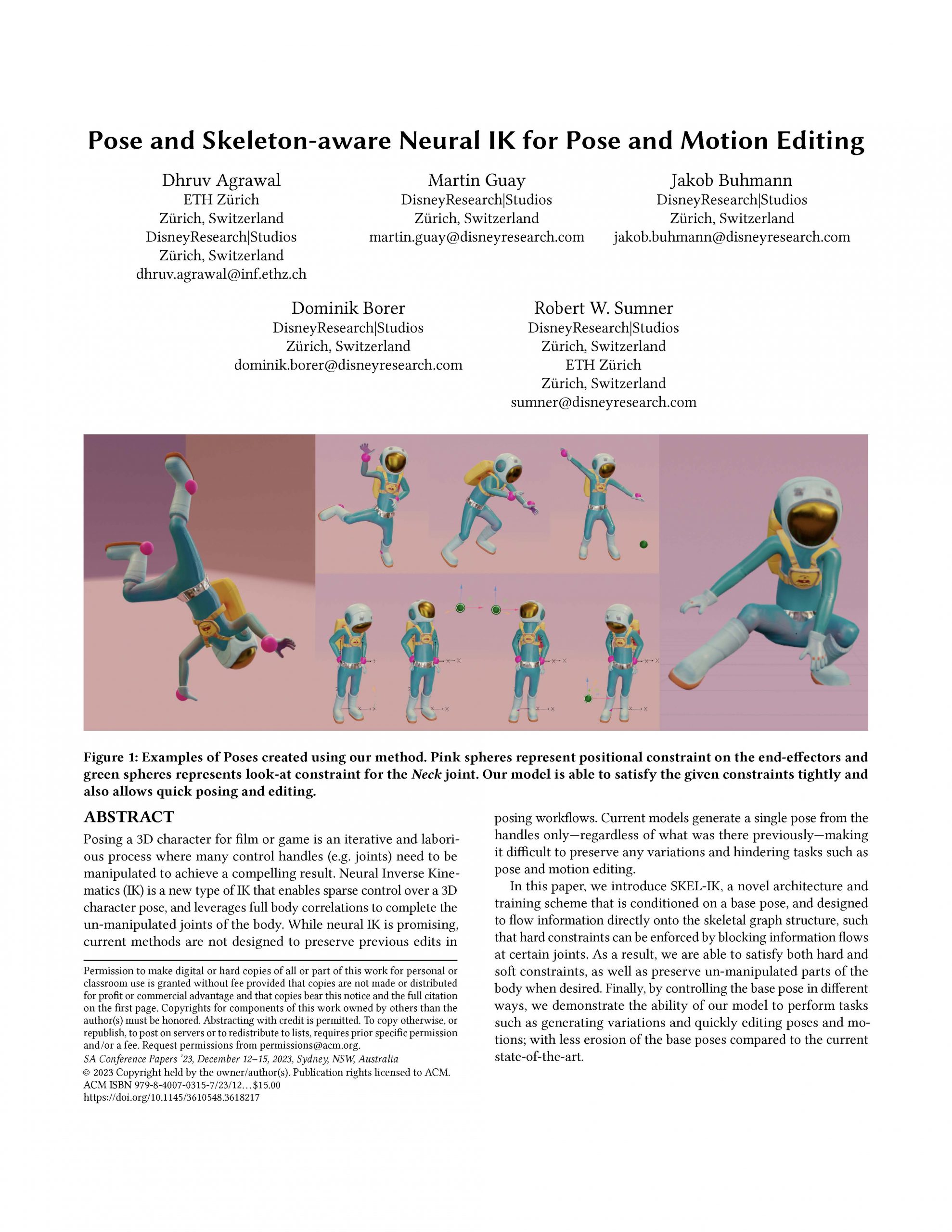Pose and Skeleton-aware Neural IK for Pose and Motion Editing
In this work, we introduce SKEL-IK, a novel architecture and training scheme that is conditioned on a base pose and designed to flow information directly onto the skeletal graph structure, such that hard constraints can be enforced by blocking information flows at certain joints.
December 11, 2023
ACM SIGGRAPH Asia (2023)
Authors
Dhruv Agrawal (DisneyResearch|Studios/ETH Joint PhD)
Martin Guay (DisneyResearch|Studios)
Jakob Buhmann (DisneyResearch|Studios)
Dominik Borer (DisneyResearch|Studios)
Robert W. Sumner (DisneyResearch|Studios/ETH Zurich)

Pose and Skeleton-aware Neural IK for Pose and Motion Editing
Posing a 3D character for a film or game is an iterative and laborious process where many control handles (e.g. joints) need to be manipulated to achieve a compelling result. Neural Inverse Kinematics (IK) is a new type of IK that enables sparse control over a 3D character pose, and leverages full body correlations to complete the un-manipulated joints of the body. While neural IK is promising, current methods are not designed to preserve previous edits inposing workflows. Current models generate a single pose from the handles only—regardless of what was there previously—making it difficult to preserve any variations and hindering tasks such as pose and motion editing. In this paper, we introduce SKEL-IK, a novel architecture and training scheme that is conditioned on a base pose, and designed to flow information directly onto the skeletal graph structure, such that hard constraints can be enforced by blocking information flows at certain joints. As a result, we are able to satisfy both hard and soft constraints, as well as preserve un-manipulated parts of the body when desired. Finally, by controlling the base pose in different ways, we demonstrate the ability of our model to perform tasks such as generating variations and quickly editing poses and motions; with less erosion of the base poses compared to the current state-of-the-art.

